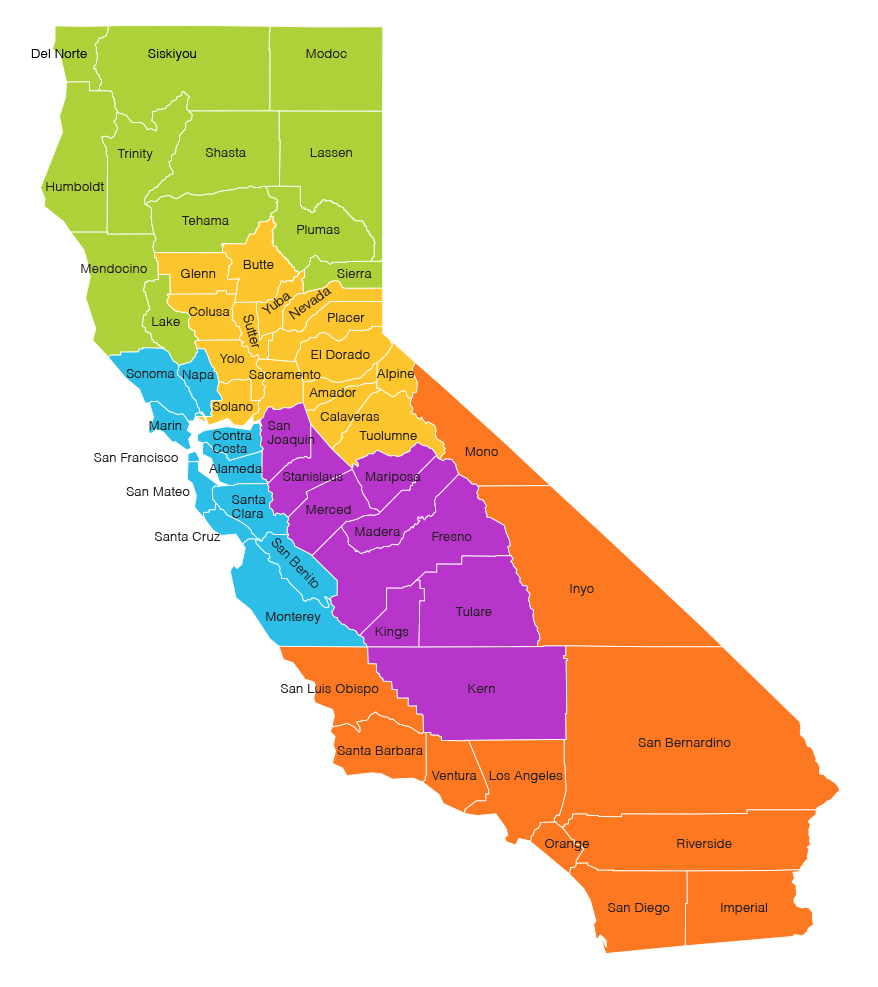Number of California Counties – Complete Reference for 2025
Number of California Counties – Complete Reference for 2025
Blog Article

Have you ever wondered how many counties California actually has? You’re certainly not the only one. Whether it’s for school projects, travel plans, or simple trivia, the answer—58—comes up again and again, but that single digitonly tells half the story.
California’s counties forma tapestry of extremes: surf-washed beach cities, high-elevation wilderness zones, fertile Central Valley breadbaskets, and historic mission settlements. Every county has a chapter in the state’s saga, moulded by gold-rush dreams, promising new industries, and ever-changing demographics.
Over the next few pages, we’ll explorethe timeline that locked the total at 58, what each county actually does for its residents, and which ones stand out for size, population, or sheer quirkiness. Ultimately, you’ll own the knowledge—and map your next California adventure with confidence.
County-Making in Early California
When California joined the Union in 1850, the map looked nothing like today’s. A tidal wave of forty-niners and immigrants pushed officials to subdivide vast districts. By the end of the 1870s, the count had risen to more than fifty counties, and that same year the final five were added, setting in stone the official total of 5 8.
Capitol archives indicate that fresh jurisdictions stemmed from three major pressures:
- Geographic isolation made court access impossible.
- Tax disputes splitting river towns from hinterlands ignited partition drives.
- Ethnic enclaves wanted self-rule.
Within a single generation, the political map hardened. Today, no proposal to add a 59th county has cleared committee, leaving historians to label the era of county making a finished chapter.
A County-by-County Tour of Terrains
Plot a route from the Smith River watershed to the date groves of Coachella, and you’ll thread through every Köppen zone short of tundra. Pacific-facing districts soak up Mediterranean precipitation, while interior giants like San Bernardino or Kern bank on irrigation.
- Alpine districts such as Placer, Nevada, and Alpine receive winter snows.
- Sacramento–San Joaquin fringe counties mix levee farms with wetlands.
- Channel-coast administrators like Los Angeles oversee ferry routes.
That geographic spread underpins why no two counties share identical economies. Topography dictates everything from wage levels to weekend hobbies.
Behind the Scenes at the County Level
In California’s layered structure, municipalities handle zoning, but county boards oversee vital “unseen” duties that keep daily life humming. Cradle-to-grave—vital records, coroner reports, property deeds—all sit at the registrar of voters.
County law-enforcement offices patrol unincorporated land, while trial courts hear felony cases. Social-services bureaus administer vaccination campaigns. Tax-allocation showdowns fill chamber galleries with activists.
Spotlight: Los Angeles County’s Scale
Los Angeles County alone employs 100 000+ workers, highlighting how elastic the system is. There’s no single blueprint when land areas shift from 47 to 20 000 sq mi.
At day’s close, these 58 mini-capitols translate state statutes into daily action. Understanding their remit helps residents demand accountability.
Demographic and Fiscal Highlights
Home to over 39 M souls, but that population is far from evenly spread. LA’s single jurisdiction accounts for roughly a quarter. On the flip side, remote Alpine could fit its voters into a high-school gym.
- Largest population: Los Angeles
- Fewest people: Alpine
- Widest landmass: San Bernardino
- Tightest borders: City & County of SF
Fiscal bandwidth mirrors population spread. South Bay enclaves report six-figure median incomes, while cotton-and-almond hubs depend on seasonal labour influxes. This revenue gap informs legislative redistricting every decade.
Memorising these recordsmakes relocation plans simpler: county metrics shape property taxes and commute times.
An Epic 58-County Road Trip
For intrepid travellers, bagging all 58 jurisdictions has become a badge. A popular itinerary sets out in San Diego, follows Highway 101 past surf towns, curves inland at Big Sur, then zigzags across the Central Valley’s orchard belt, before ascending into the Sierra Nevada for old stamp mills.
Three-Day County Clusters
- Coastal Kick-off – San Diego to Santa Barbara; ten jurisdictions in three days.
- Crop-Belt Drive – Bakersfield up to the delta; eight hours of orchards.
- Shasta & Siskiyou Turn – evergreen corridors; fire-lookout hikes.
Close the circuit in El Centro, having logged 1 400–2 000 miles. By then, you can confidently claim you know “how many counties California has”—because your copyright stamps prove it!
FAQ
Curious about California’s 58 counties? The following FAQ has you covered.
How many counties does California have?
Government documents list fifty-eight counties—a number that hasn’t changed since 1907. Check any authoritative source, and you’ll find the same figure: 58.
Where do the most Californians live?
LA County leads by a wide margin, housing roughly one in four Californians. Its size stems from historic migration waves, a diverse economy, and global cultural pull.
What is the smallest county in California by population?
Tiny Alpine County sits at the bottom of the population chart, often cited at just about a thousand souls. Its remote Sierra setting naturally restricts settlement, preserving a frontier feel.
Which county covers the largest land area in California?
The land-area giant is San Bernardino County encompassing deserts, mountains, and metro suburbs alike. Its sheer scale means climate zones shift from alpine snow website to Mojave heat within county lines.
Why does California have exactly 58 counties?
Early statehood growth pressures split larger districts into smaller units, wrapping up after Imperial broke from San Diego in the early 20th century. While secession talk appears now and then, no plan has passed statewide hurdles.
Could a region break away to become its own county today?
On paper, state statutes permit county formation, though the process is arduous. Financial viability studies plus state-level sign-off deter most would-be county creators. Consequently, boundaries have frozen for over a century.
Why are counties important to everyday life?
Counties handle the backbone of local governance: property assessments, public hospitals, welfare programs, and jails. Their wide remit bridges state mandates with community needs, making the 58 jurisdictions essential to all Californians.
Report this page